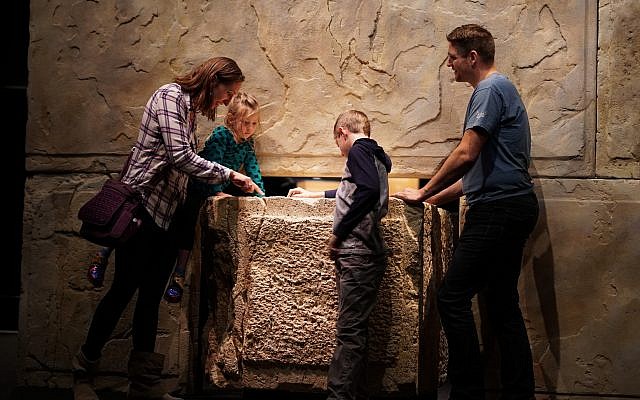Two Dead Sea Scrolls to go on display for the first time in new Denver exhibit

Two Dead Sea Scrolls will be shown for the first time in an unprecedentedly large-scale Israel Antiquities Authority exhibition in Denver, Colorado. The two scrolls will be presented along with a three-ton stone from the Western Wall, some 600 artifacts from the biblical to Bar Kochba periods, and 18 other Dead Sea Scrolls in an exhibit set to run for six months, starting Friday.
The unveiling of two new fragments is fitting in a year celebrating the 70th anniversary of what is arguably the most important archaeological find of the 20th century.
The first scroll, designated Scroll 4Q274 Tohorot (Purities) A, deals with the rules of ritual purity. It was written at the end of the first century BCE, in Second Temple-period Hebrew.
According to an IAA press release on the exhibit, the scroll foreshadows later rabbinic writings and states that “ritually impure individuals had to be isolated not only from those who were ritually pure, but also from those with a different form of impurity.” The notion of purity and impurity is borne out by archaeological artifacts from the period, including the prominence of stone vessels, which cannot become impure.
The second “new” manuscript is Scroll 4Q418, “Musar leMevin” (Instruction to One Who Understands), which is wisdom literature and was also written at the end of the 1st century BCE. According to the IAA, the scroll is similar in character to the biblical book of Proverbs, but also contains apocalyptic messages.
It is written in the format of a sage instructing a disciple in the word of God on how to become righteous and avoid evil, in daily life, marriage and business. “One unusual characteristic of this work is the constant repetition of the Hebrew phrase raz nihyeh, a term whose meaning is still a matter of scholarly debate,” states the IAA release. “Some scholars translate it as ‘the secret of existence,’ but it can also mean ‘the approaching mystery.’”
Other artifacts of interest include a First Temple era royal estate’s large lintel and a document from the Bar-Kokhba Revolt (132–135 CE).
Rotating exhibition to preserve the scrolls
The 20 Dead Sea Scrolls will be displayed in two groups of 10 at a time, in a rotation of three months each. Upon their return to Israel, the scrolls, written on parchment and papyrus, will be placed for five years in the IAA’s Dead Sea Scroll vault, which is climate-controlled to mimic the conditions of the Judean Desert’s Qumran caves — dark and dry.
The displayed manuscripts exhibit the main forms of known scroll literary genre, including biblical, extra-biblical and sectarian scrolls. According to the IAA, “They present a unique picture of the spectrum of religious beliefs in Judah in ancient times as well as daily life in the stormy Second Temple period.”
Read More: Times of Israel